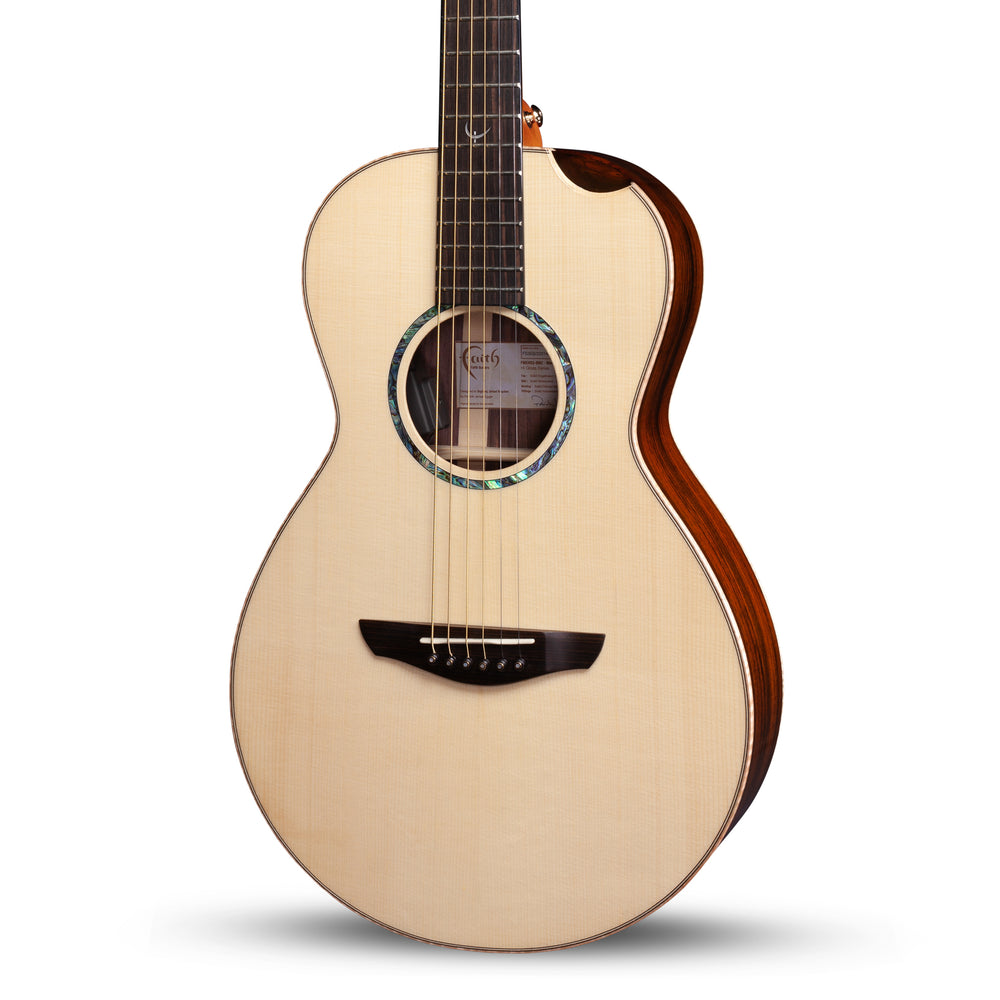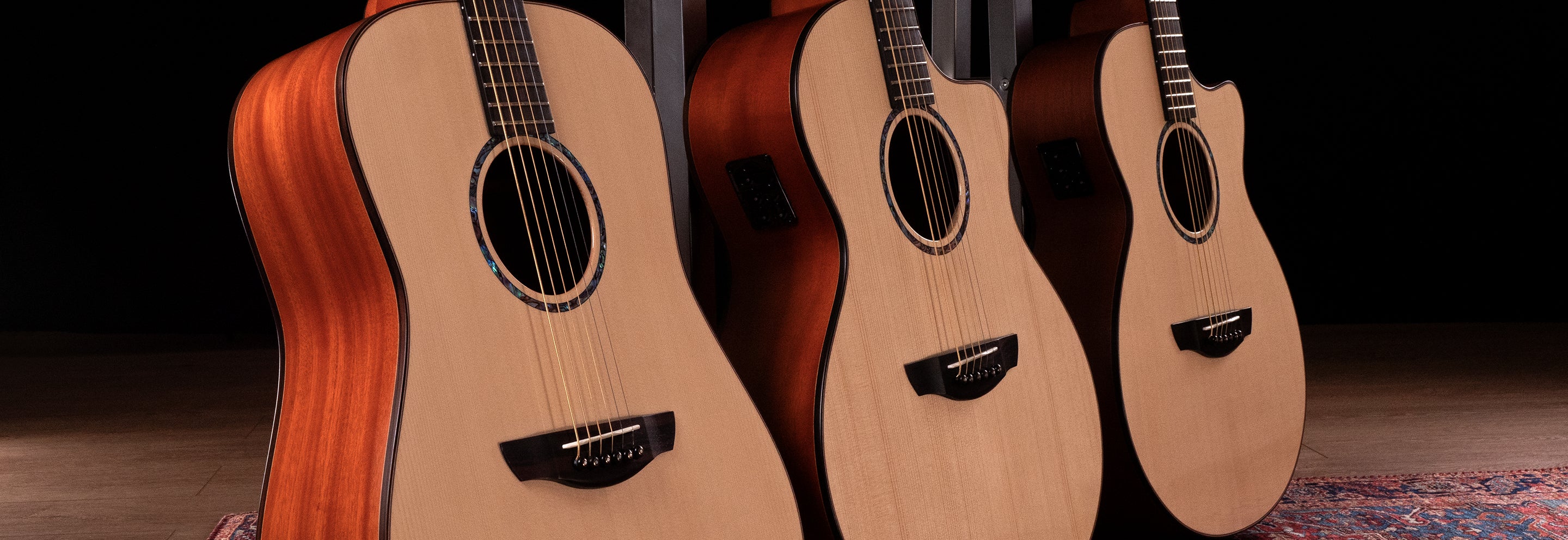Size really does matter
Learn all about our Acoustic Guitar body shapes and why size really does matter.
The shape, dimensions and depth of your acoustic guitar has an important effect on how it will both feel and sound, both to you, and to your audience. Will you choose the traditional Saturn dreadnought shape: broad-voiced and mid-range focussed? Or perhaps the versatile Venus auditorium shape: slimmer all-round making up what it lacks in low-end with great articulation in the high-mids? Or perhaps you want a guitar with a more subtle voice like the Mercury parlour model; or something truly huge like the Jupiter jumbo. Whatever you need, Faith have you covered.
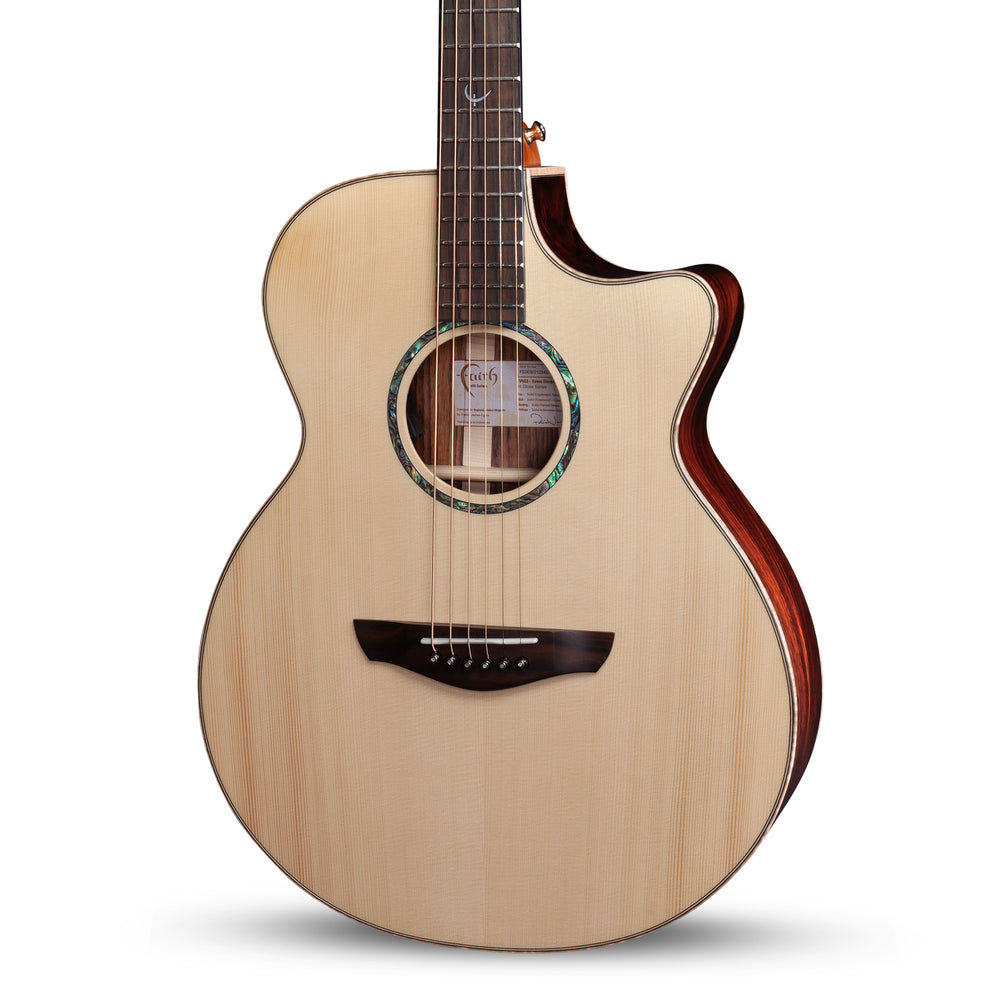
Venus (Auditorium)
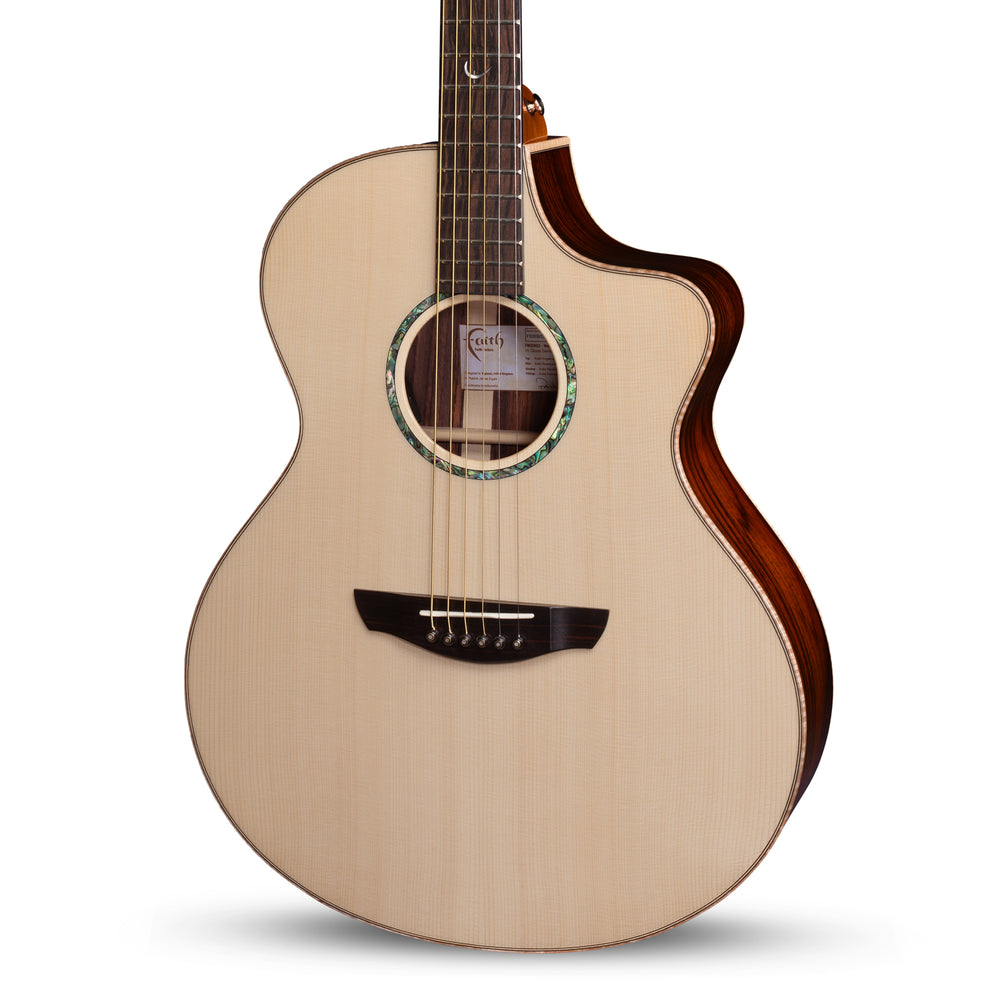
Neptune (Baby Jumbo / Grand Auditorium)
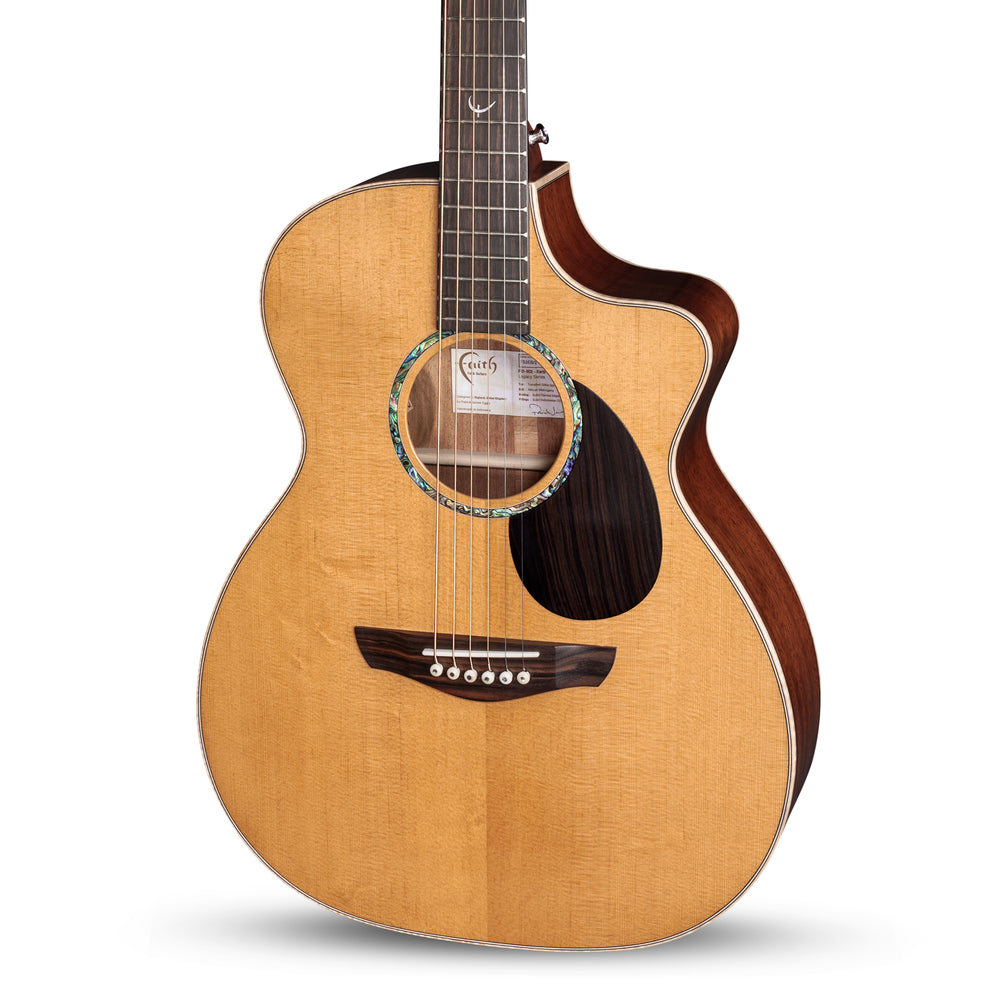
Earth (OM Cutaway)
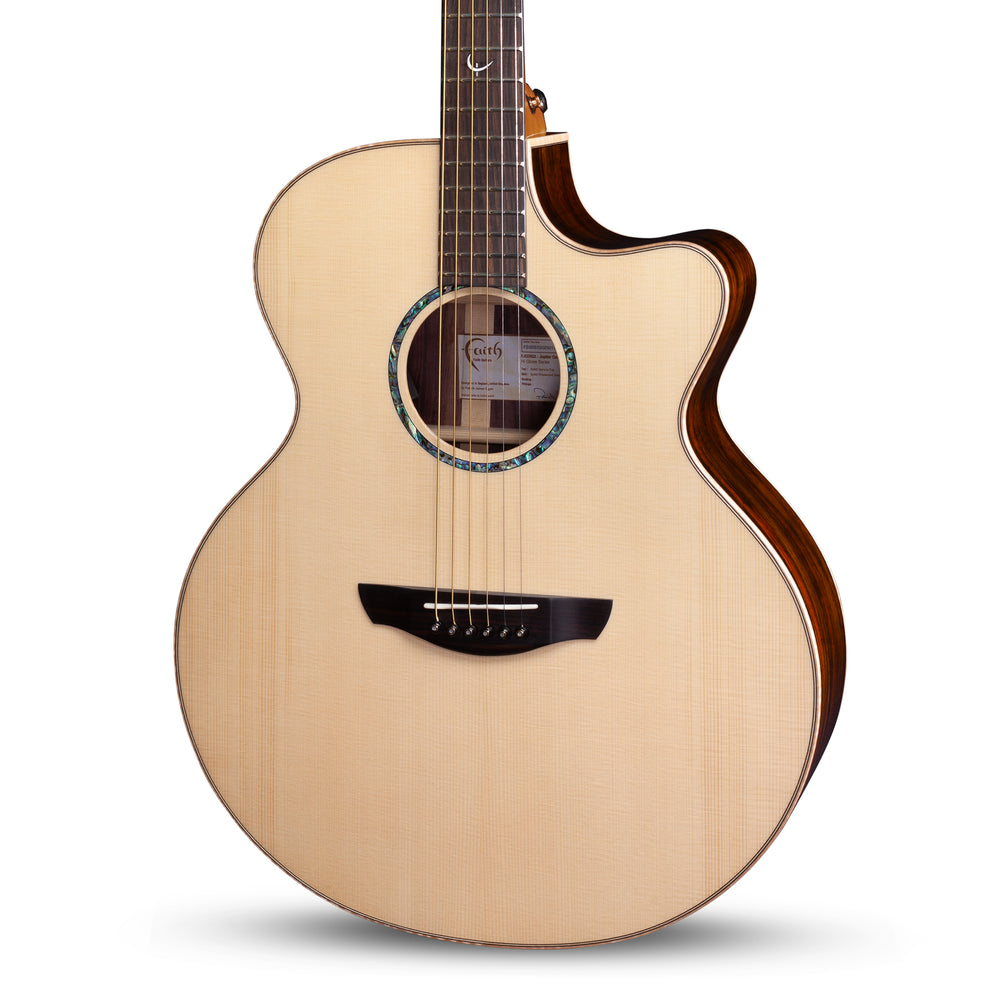
Jupiter (Jumbo)
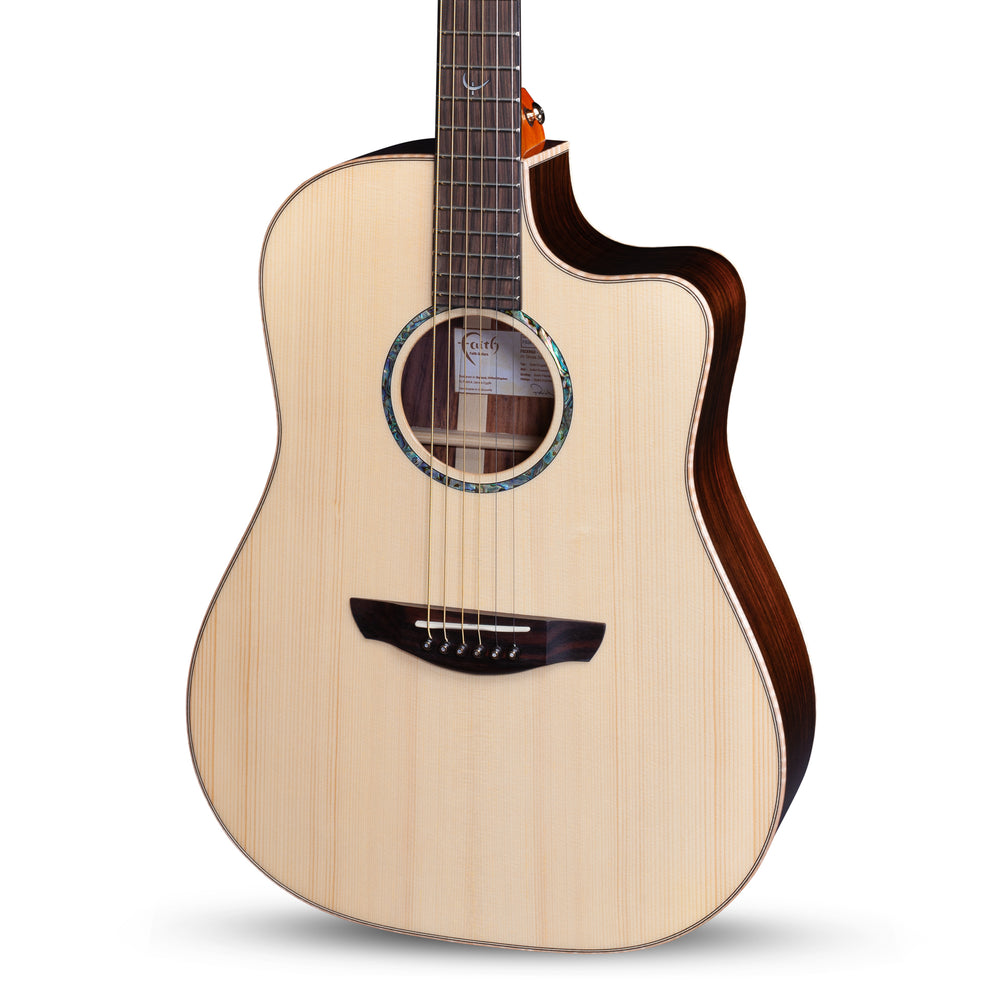
Saturn (Dreadnought)
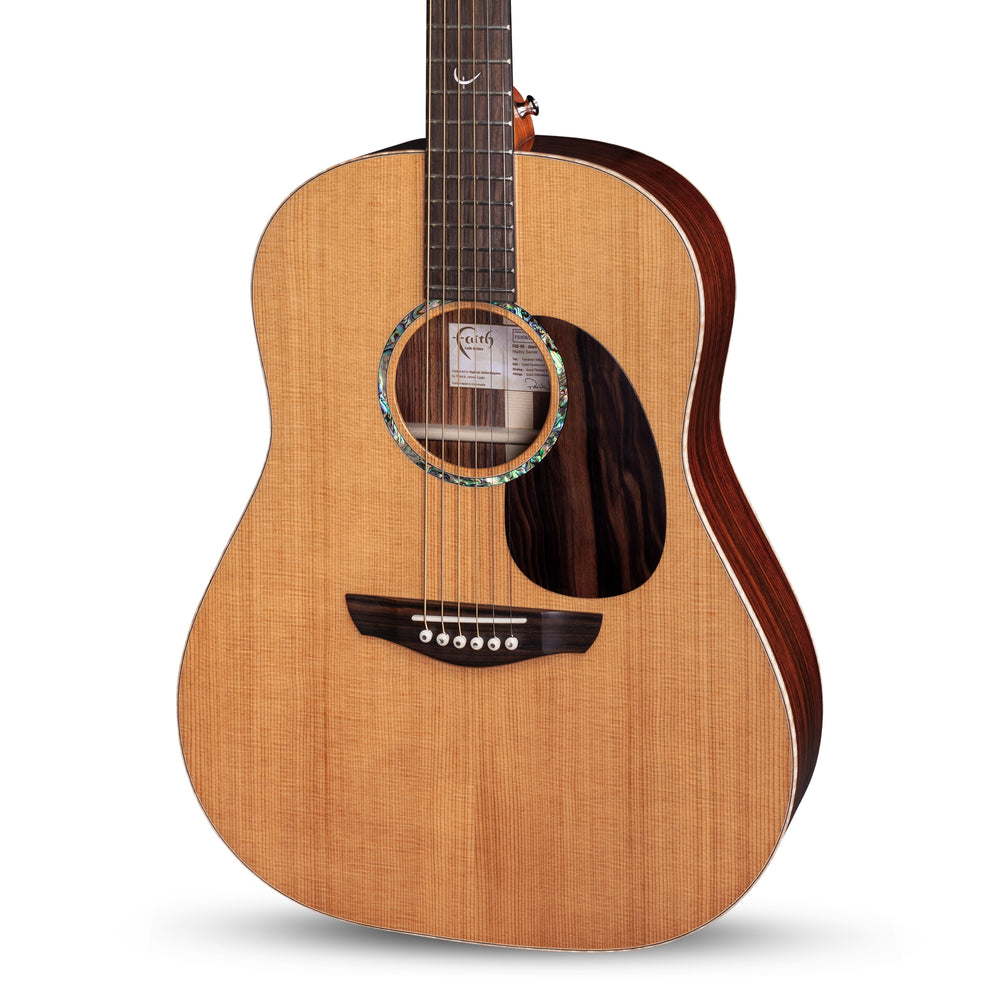
Mars (Drop Shoulder Dreadnought)
